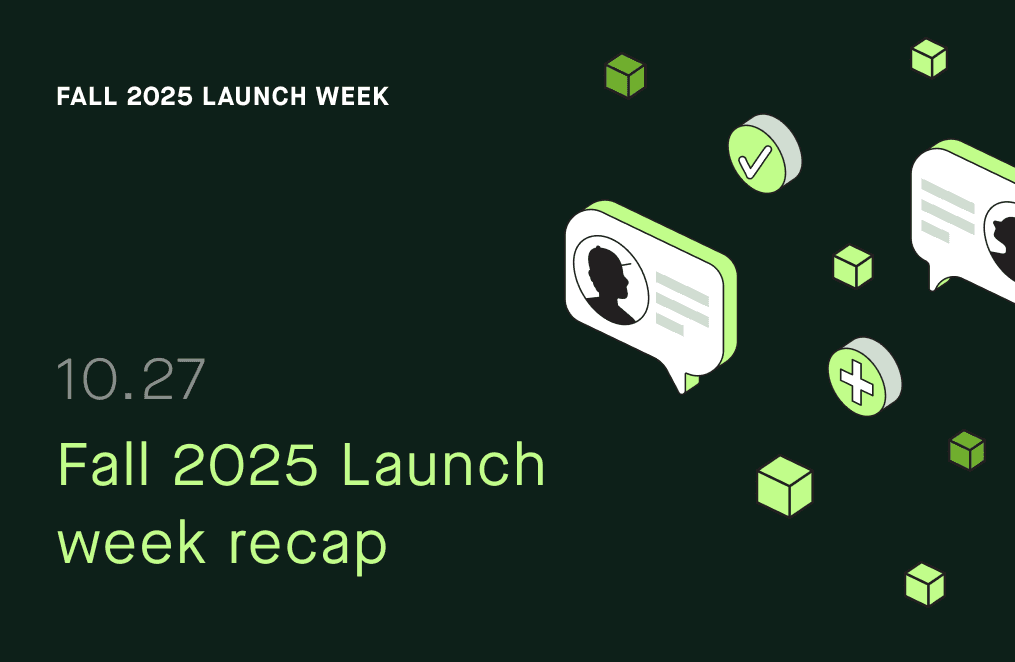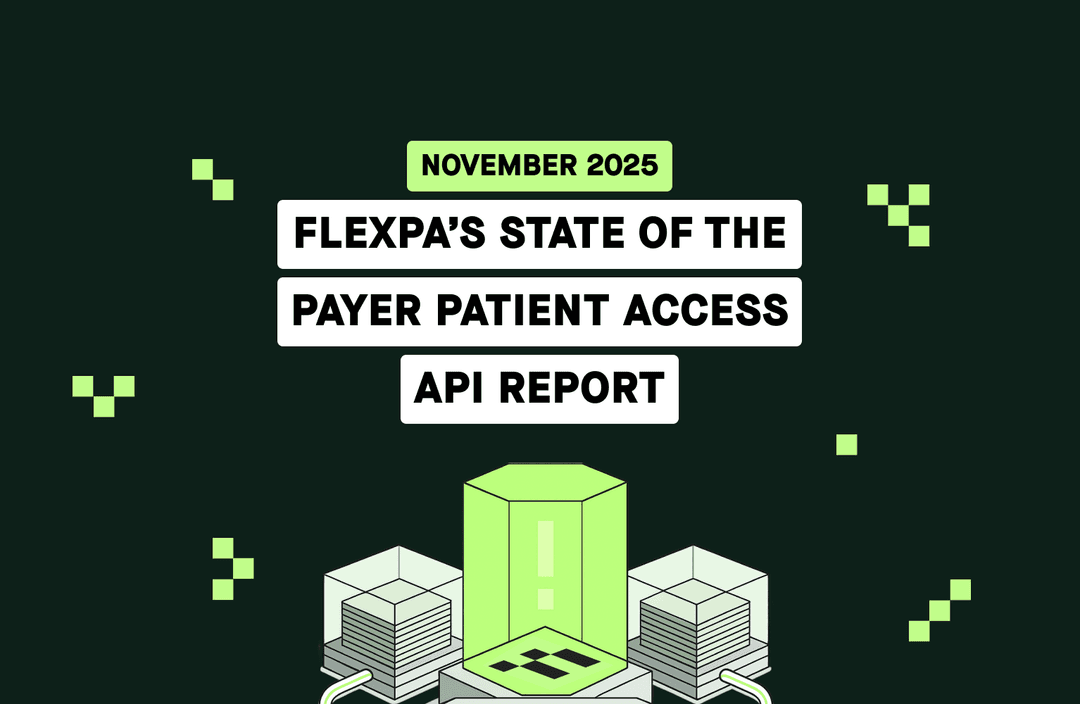Join us for a live Q&A and launch week rewind on November 12. Flexpa staff will be available for questions about all of our launch week announcements!
Last week marked a major milestone as we completed Flexpa's very first Launch Week. It was five days of announcements representing years of work building infrastructure for patient-centered healthcare data access.
Flexpa's mission is to bring healthcare data sharing to the 21st century. Every one in the U.S. should be able to get their data and share it in a manner that is secure, private, and in our control. This Launch Week was about connecting all the pieces.
We unveiled five groundbreaking announcements that redefine how patients and developers interact with healthcare data. From AI-powered health records to nationwide clinical access via TEFCA, here's everything we launched during Fall 2025 Launch Week.
Day 1: Meet Flexpal – Your AI Health Agent
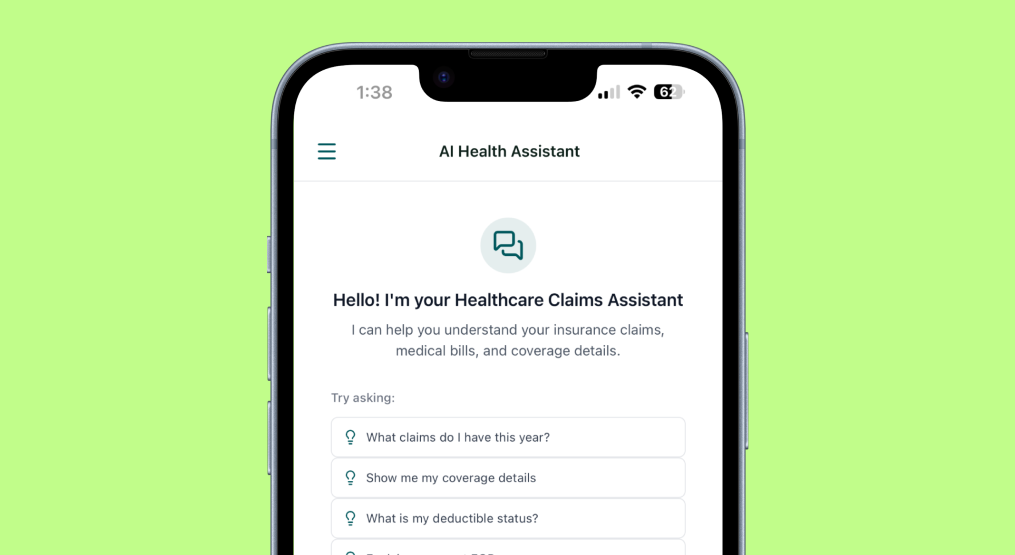
We kicked off Launch Week with Flexpal, an AI agent integrated into our upcoming mobile app that transforms how patients interact with their health records. Instead of struggling through raw FHIR resources and medical codes, patients can now ask natural questions—"what were my lab results last month?" or "how much did that procedure cost?"—and receive answers grounded in their actual health data.
An Agent Connected to Your Records
Flexpal's power comes from its architecture: the agent makes intelligent tool calls behind the scenes, performing structured queries against FHIR resources, analyzing diagnosis codes, connecting related conditions across time, and surfacing insights that manual review would miss. This is "conversational interoperability" in practice—natural language serving as the interface to complex healthcare data structures.
The agent also extends beyond locally stored records when appropriate. Questions about lifestyle changes, medical costs, or latest research studies trigger intelligent web searches for current medical guidance, which Flexpal then synthesizes with the patient's specific health profile. All sources used are cited and presented to the user for verification.
Developer Platform Access
The infrastructure powering Flexpal includes our network of patient access APIs, FHIR resources, and consented records exchange. ALl tools in this platform are available to developers building healthcare applications. Whether you're building for care coordination, benefits navigation, clinical research, or legal use cases, the same foundation enables secure, consented access to real health data with support for building agentic experiences.
The mobile app is currently in development with TestFlight invites rolling out soon.
Day 2: Flexpa is Now a TEFCA IAS Provider
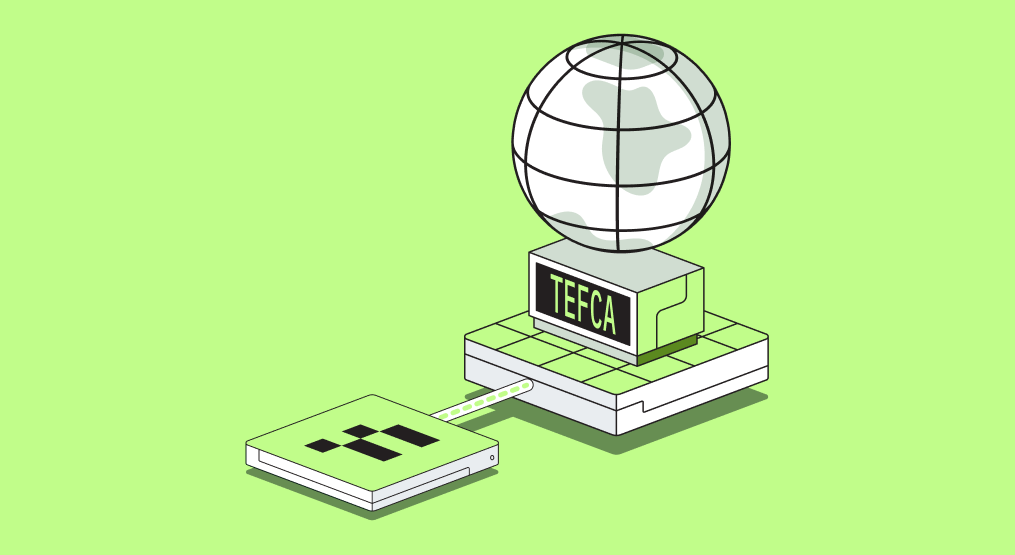
Day 2 brought a major infrastructure announcement: Flexpa is now an Individual Access Services (IAS) provider on TEFCA, the national framework for health information exchange. This fundamentally changes how patients can access their clinical records across the entire healthcare system.
From Provider-Only to Patient-Directed Access
Health information exchanges have historically been provider-to-provider networks, leaving patients unable to retrieve their own records in a digitally native manner. TEFCA's Individual Access Services purpose of use creates the patient-directed pathway that was missing—allowing patients to access clinical records from hospitals, clinics, and EHR systems nationwide through applications of their choice.
Through partnerships with multiple QHINs and identity providers supporting IAL2 verification standards, Flexpa can now help patients retrieve the complete clinical picture: doctor's notes documenting the "why" behind diagnoses, lab results with structured findings for tracking health metrics over time, diagnostic reports from imaging and specialist consultations, and procedure documentation that bridges the gap between billing codes and clinical reality.
Complete Health Profiles
This TEFCA connectivity layers on top of our existing network of 400+ health plan connections providing access to insurance claims data. The combination unlocks unprecedented opportunities:
Payer data shows the high level health journey through claims that were billed: covered—diagnoses, procedures, medications dispensed, and detailed cost information. Provider data shows the details: doctors' notes, lab result values, imaging findings, and treatment rationale. Together, they enable care coordination across fragmented health systems, patient engagement with complete longitudinal histories, clinical decision support informed by both claims and clinical context, and second opinions backed by comprehensive documentation.
For developers, this complexity is hidden behind a simple interface. Enable TEFCA in the Flexpa Consent SDK with a single parameter. We handle querying across QHINs, discovering patient records, retrieving clinical documents, and wrapping everything in standardized FHIR resources.
Day 3: All-in-one Consent SDK
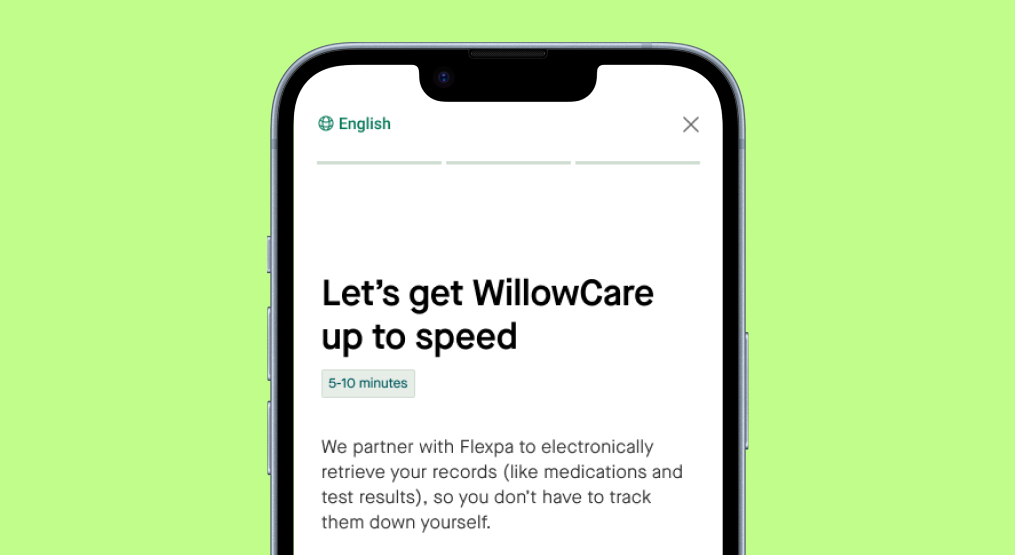
Adding TEFCA to our existing payer and provider API network required rethinking the entire patient authorization experience.
Flexpa Consent 2.0 is a complete redesign providing a unified interface for all health data access patterns: CMS 9115F payer APIs, ONC (g)(10) provider APIs, and TEFCA IAS. And we do all this without exposing the underlying complexity to patients.
Intelligent Routing
The core innovation is intelligent routing that matches data sources to use cases automatically. Patients don't see the technical details. They don't need to know whether their data comes from a TEFCA query across QHINs, a payer endpoint, or a provider's FHIR server. They simply authorize access to their health information with a trusted application.
The system routes patients to optimal pathways based on application configuration. Different routes unlock different insights: TEFCA and provider APIs deliver more reliable unstructured clinical notes and detailed diagnostic context, while payer APIs include comprehensive cost information and higher-signal medication data from pharmacy claims.
Speed And Security
Healthcare happens on phones—in waiting rooms, between appointments, on the way to the doctor. The redesigned experience is mobile-first so it works where and when patients need it, with state-of-the-art security, end-to-end encryption, and a flow that balances speed with appropriate gravity.
Healthcare entities are notoriously confusing. Provider networks overlap, insurance brands change, facilities have multiple names. AI-powered navigation handles this conversational layer, walking users through finding the right insurance provider or facility, checking eligibility on the backend, and routing to the correct endpoint—all while handling edge cases that rigid rule-based systems can't manage.
The result is a consent experience that treats health data sharing seriously without being burdensome. Fast, but not rushed. Secure, but not complex. Comprehensive, but not overwhelming.
Day 4: Data Sharing with SMART Health Links
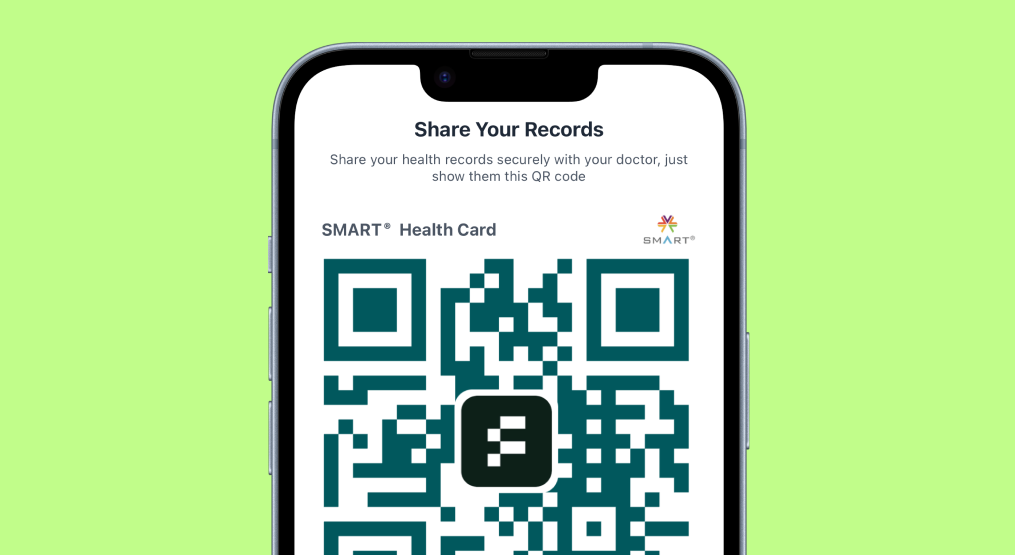
Accessing comprehensive health data across multiple sources creates a new question: how do patients actually share it?
Day 4 introduced our SMART Health Links API implementation, a production-ready infrastructure for creating secure, shareable health data through QR codes and encrypted URLs.
From Clipboards to QR Codes
The clipboard problem persists across healthcare: walk into a new provider's office and you'll be handed forms asking you to transcribe your entire medical history from memory. Your records exist digitally across multiple EHR systems, labs, and pharmacies—but you're still writing information by hand. SMART Health Links solve this by making patients the transmission mechanism for their own data. Instead of data locked in portals requiring credentialed access, patients generate secure links they control and share as needed.
The technology enables scenarios that weren't practically possible before:
- Immediately viewing lab results after getting blood work done. Patients receive a QR code upon checking out to view results shortly after.
- Portable visit summaries embedded in the QR code after patients leave appointments that contain visit summaries, diagnoses, new prescriptions, and follow-up instructions.
- Functional digital insurance cards with current coverage details and eligibility information. Providers scan the QR code to verify coverage instantly.
- Immediate medical history with unfamiliar providers. Generate SMART Health Links containing current medications, allergies, and recent procedures to get providers up to speed fast.
Specification-Compliant, Production-Ready
Our implementation fully supports the SMART Health Cards and Links STU1 specification with AES-256-GCM encryption, bearer token security model, and optional passcode protection. Links support expiration times, revocation, and brute-force protection that automatically locks access after failed attempts.
The API runs on the same infrastructure powering our network of 400+ payer connections, providing the reliability and performance refined through years of processing production healthcare data. This is part of our commitment as a CMS-aligned network early adopter to Kill the Clipboard by December 31, 2025.
Day 5: Open-Sourcing Healthcare Data Knowledge
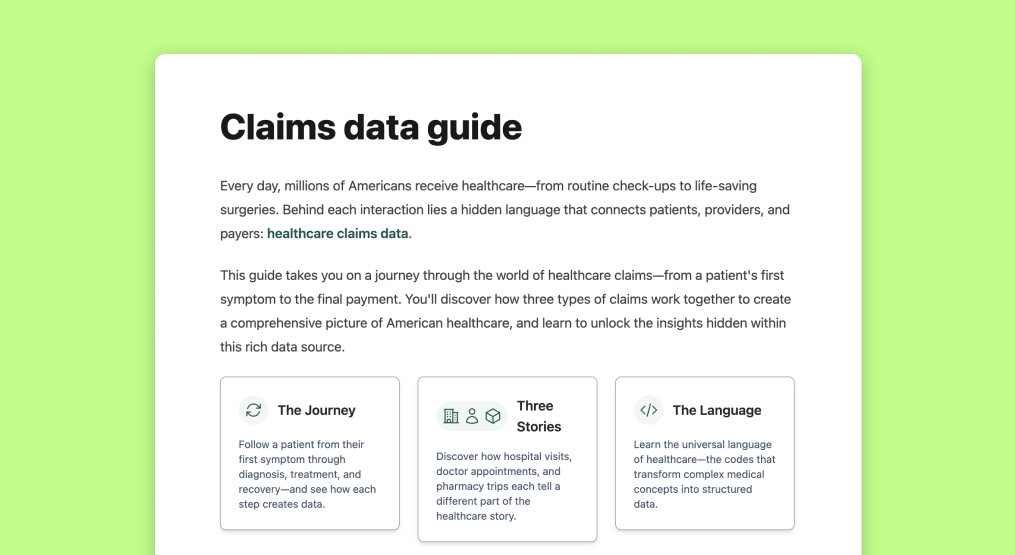
Everything that was launched during the week, AI agents, nationwide clinical access, intelligent consent routing, secure sharing, is built on deep domain knowledge in healthcare data interoperability. For Day 5, we made this knowledge publicly available.
Documentation We Wish We Had
We've open-sourced the reference documentation and guides built internally to understand the diversity of payer data. Working with claims data in the FHIR Explanation of Benefit (EOB) resource requires navigating the journey from origin schemas—CMS 1500, CMS 1450, UB04 claims, NCPDP pharmacy transactions—to standardized FHIR resources. This requires deep research that every developer working in this space has to replicate independently.
The release includes two comprehensive resources:
- Claims Data Guide: A broad introduction to what's in claims data, how it's coded, and how to approach it from a health informatics perspective. Consider it "Medical Coding 101 for Developers." The guide uses patient stories to walk through the complete lifecycle, showing how coded medical events become structured data and mapping where different codes appear in FHIR resources.
- CARIN Blue Button EOB Reference Documentation: Detailed reference covering the most common 80% of elements in the CARIN BB profiled Explanation of Benefit resource, with practical examples from real-world implementations across the 400+ payer endpoints we've connected to.
These are the resources we built for ourselves. They're now free for everyone because understanding claims data shouldn't require reverse-engineering hundreds of payer implementations.
The Complete Picture
Launch Week represents Flexpa's comprehensive approach to patient-centered healthcare data: not just access, but useful access; not just data retrieval, but intelligent interaction; not just technical capability, but practical usability.
Each announcement connects to the others: AI agents require comprehensive data sources—which TEFCA alongside payer APIs provides. Multiple data sources require unified authorization—which Consent 2.0 delivers. Accessing data creates the need for sharing—which SMART Health Links enables. All of it requires deep domain knowledge—which our open-source documentation makes available.
The result is infrastructure for the vision the 21st Century Cures Act articulated: patients controlling their health information, able to share it seamlessly with applications and providers of their choice, with the technical infrastructure to actually work at scale.
Next Steps
For patients: Flexpal will transform how you interact with your health records. Join the waitlist to be notified when the mobile app launches.
For developers: Build healthcare applications with nationwide clinical access through TEFCA, intelligent consent routing, SMART Health Links, and consented access to comprehensive health data. Explore our documentation to start integrating, or schedule a demo to discuss your specific use case.
Interested in staying updated on Flexpa's latest features and industry developments? Subscribe to our newsletter. Ready to start building? Schedule a demo to learn more.
